
Ovolo Hotels is already leading the way in giving guests what they want. With plant-power on the rise, they’re getting ahead of the curve and going full-tilt vegetarian in all of its kitchens. We spoke with the owner and founder about why, plus squeezed some great recipes out of his chefs in Hong Kong and Australia.

ONE GREAT THING ABOUT BOUTIQUE HOTELS is that they can have a cool idea and just get cooking. Rather than trying to be all things to all people, they can be themselves and hope the like-minded among us come along for the (dinner) party.
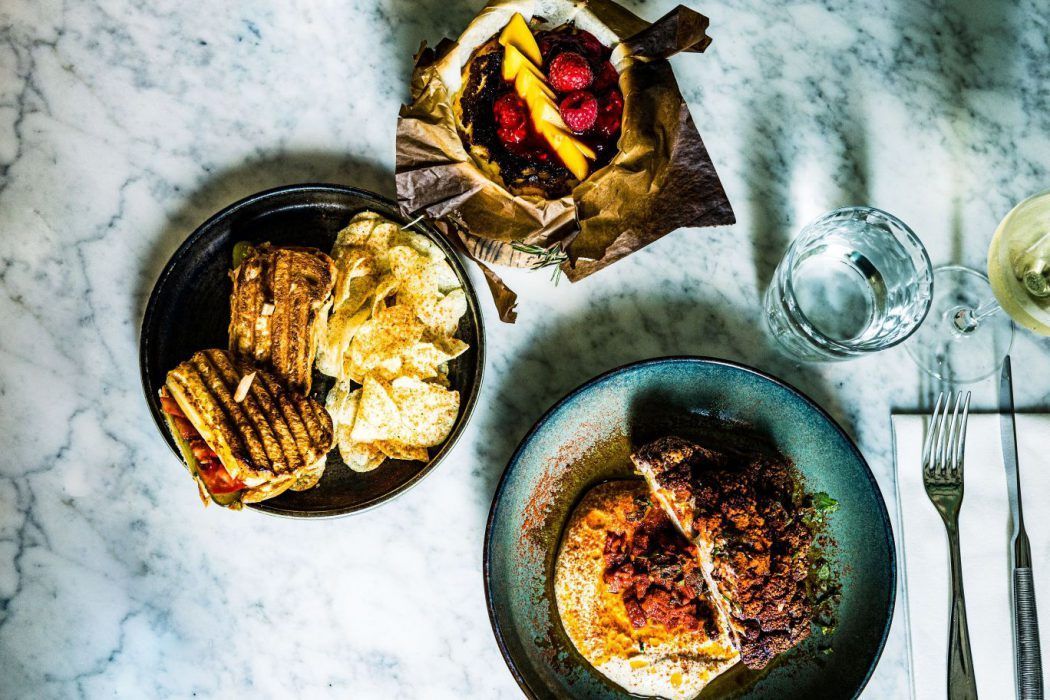
Perhaps it shouldn’t be shocking that a hotel brand that fills you up with free minibar, happy-hour drinks, breakfast, and all-day snacks has F&B at the top of its priorities list. What might be a surprise is that a company that prides itself on offering personal choice has decided to make a big one for its guests: Ovolo Hotels is going 100-percent vegetarian in all of its kitchens, be they restaurants, bars or room-service menus.
Ovolo, with fun, design-led hotels in Hong Kong, Sydney, Melbourne, Canberra and Brisbane, and one coming soon to Bali, isn’t just jumping on the plant-forward bandwagon. They dipped a couple of toes in with Veda at Ovolo Central, Hong Kong’s first vegetarian hotel restaurant, and then Alibi Bar & Kitchen, at Ovolo Woolloomooloo, which was the first 100-percent plant-based hotel restaurant in Australia and New Zealand.
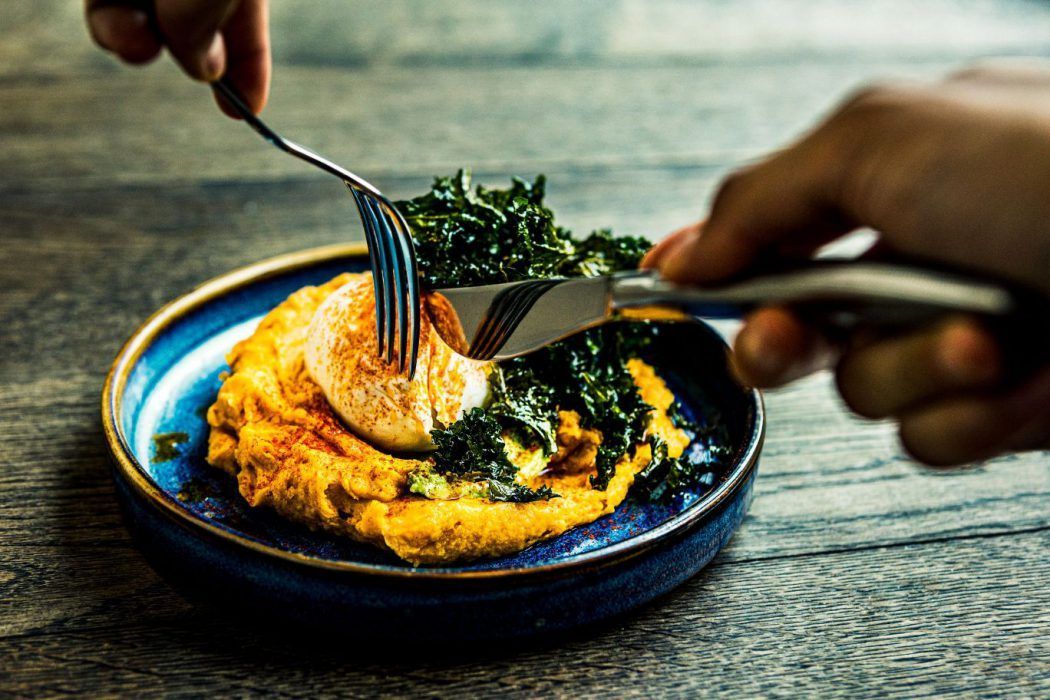
The brand-wide move is dear to the heart of Ovolo CEO and founder Girish Jhunjhnuwala, who is a lifelong vegetarian. But as you’ll see in our conversation that follows, he made this decision not from an ethical high horse, but to encourage climate-conscious eating, mindful self-nourishment, a more holistic garden-to-gut approach to health that still values taste, texture and variety.
These are notions that are prime for popularity among foodies in this newly thoughtful era, and should tickle the palates of all of us—meat-lovers and -loathers alike. For evidence, just have a look at the recipes the Ovolo chefs have shared with us below.
T+L: This is a bold move. What makes you think guests are ready to be told there’s no bacon at breakfast?
Girish Jhunjhnuwala: I am very happy to say that our customers loved Veda and Alibi, our first two vegetarian restaurants, and it is due to their success that we felt confident in going fully Veg, and confident that this was going to be a trend that sticks. Over the past decade, I have also seen a huge attitude shift towards vegetarianism. As people around the world become more educated and more aware of not just the health implications but also the environmental impact of consuming meat, vegetarianism as a diet has sky-rocketed.
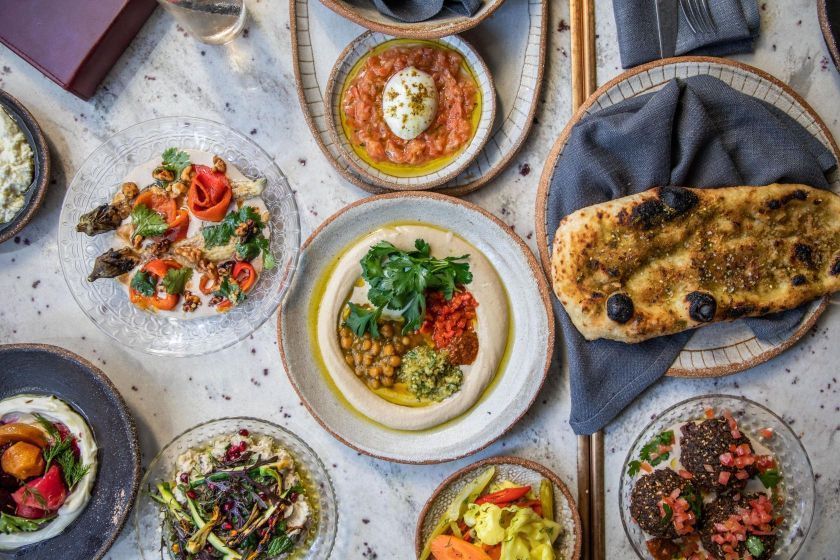
T+L: Do you think this will stigmatize your brand in any way?
G.J.: Of course, with launching something on this scale there is always that fear. This fear comes with the experimentation of all our new ideas. There is always some pushback, but if you believe in it enough then it becomes much easier to convince your guests.
By going vegetarian, we are showing our customer base how committed we are to sustainability and to pushing boundaries further, which we have always done. In order to be revolutionary, we must provide something new and never-before-done.
T+L: What are your favorite dishes on the new menus?
G.J.: The cauliflower steak at ZA ZA TA [in Brisbane] is my absolute favorite. It is extremely well done, and does a great job of bringing in the much-loved Israeli spices, dips and sauces to create a great dish.
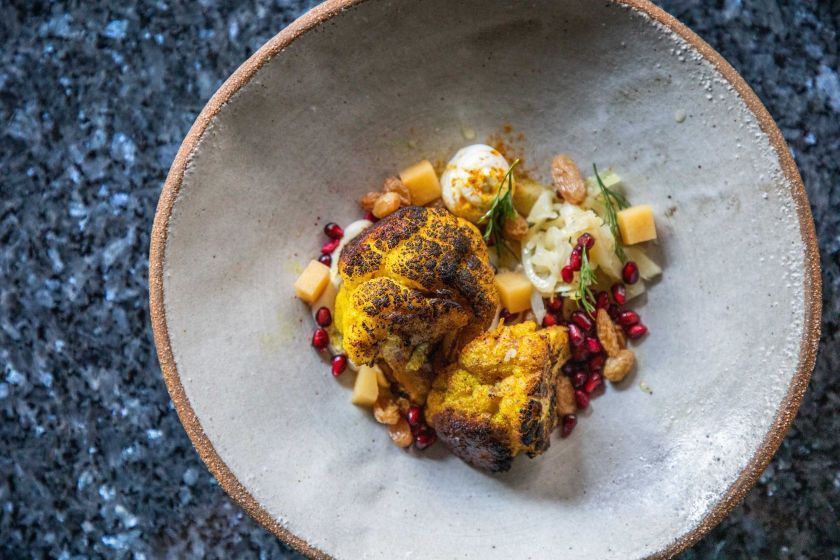
T+L: How has the shift to vegetarian affected the Ovolo supply chain?
G.J.: In line with our commitment to sustainability, we have made a push for sourcing and supporting local suppliers. There are a lot of vegetable suppliers in Hong Kong but few that care about the quality of the produce and that work towards eliminating single-use plastic and Styrofoam containers. So in order to best align with our values, we’re quite picky with the ones we choose to work with.
We have looked at options of growing some of our own vegetables and herbs or working with local farmers but due to the warm weather, it can get quite tricky. Therefore, in order to ensure quality and variety, we often do still source some produce internationally.
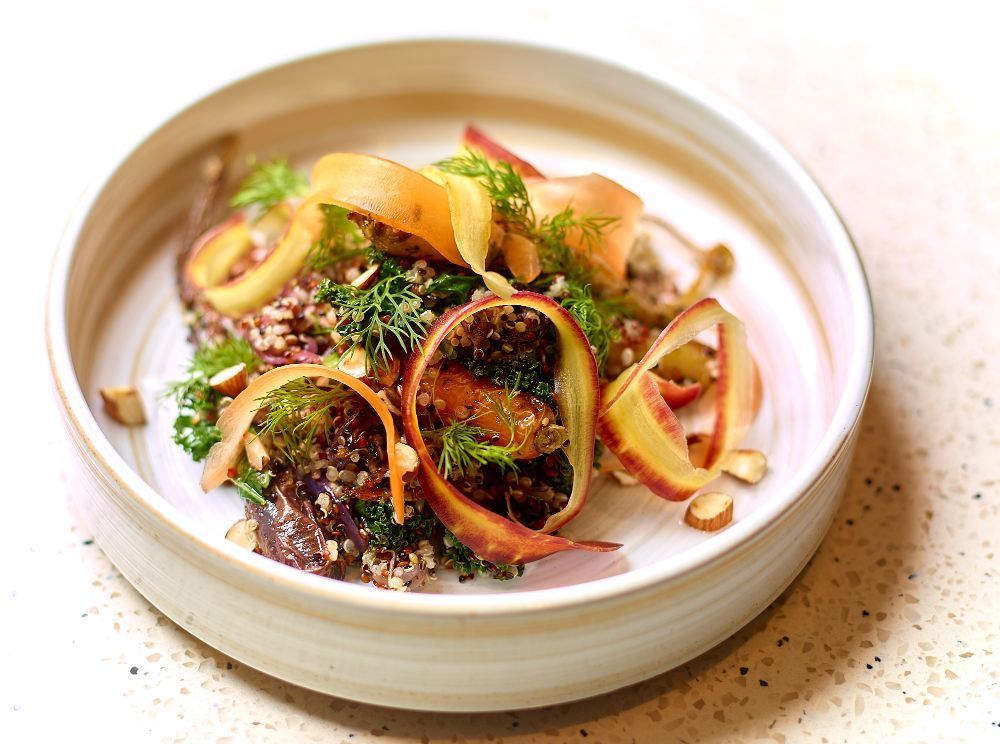
T+L: You’re only committing to this change for a year. Then what?
G.J.: We are doing this for one year for the time being and we will see how our customers react to it. However, it is something that I personally hope we can continue with for the long term.
T+L: What other innovative pro-environment measures are you taking in the hotels?
G.J.: We eliminated single-use bathroom amenities made of plastic, replaced plastic straws with environmentally-friendly alternatives, and went with reusable woven bags for slippers. Going vegetarian across all our restaurants is definitely the initiative that we have pushed on the largest scale, but we will continue to incorporate sustainable and ethical practices as much as possible.
COOK VEGETARIAN WITH OVOLO
Whether or not you can travel now, these two vegetarian recipes will help you try the new taste of Ovolo at home.
Zesty Fried Tempeh and Salad
By Alibi at Ovolo Woolloomooloo, Sydney, Australia
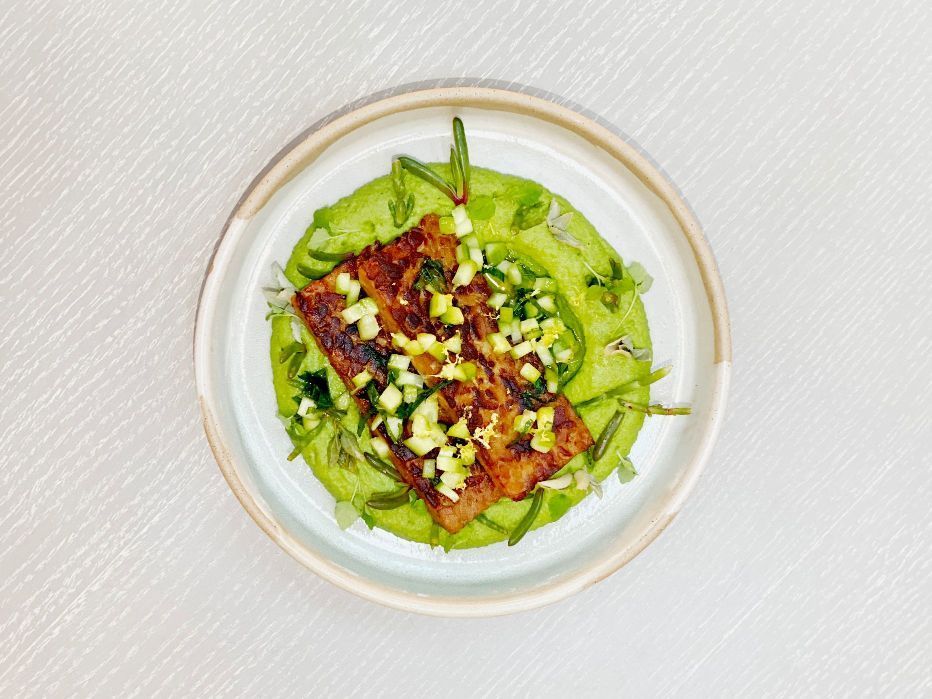
Preparation and cooking time: 30 minutes
Ingredients
- Tempeh marinade (mix and set aside)
* 50ml tamari
* 50g agave
* 10ml sesame oil
* 10ml mirin - 1 packet tempeh
- Pea coriander pesto (blend in food processor until smooth)
* 250g peas
* 1 bunch coriander
* 50ml extra-virgin olive oil
* 5g salt - Cucumber mint dressing (mix the last three ingredients together, set aside the cucumber and mint for service)
* 100g cucumber – peeled, deseeded and diced
* ½ bunch mint leaves (chiffonnade)
* 50ml rice-wine vinegar
* 100ml extra-virgin olive oil
* 10g salt - Salt bush
- Samphire
- Sea banana
- Micro lemon balm
Method
Cut the tempeh into 6 equal portions (first in thirds, then each third in half). Place in a cryovac bag with the marinade and cryovac tightly so the marinade penetrates the tempeh. If you don’t have a cryovac, simply cover and set aside in the fridge (preferably for 24 hours).
1. To assemble the dish, place 2 dessert spoons of pesto in the middle of the plate, making a circle with a small well in the middle (large enough to fit a piece of tempeh).
2. Garnish the outer rim of the pesto with the sea herbs and lemon balm.
3. Place in a non-stick pan with extra-virgin olive oil on a medium heat. Color both sides (be careful the pan is not too hot as it will tend to burn because of the tamari and agave in the marinate).
4. Then place a single piece of tempeh on the pesto (repeat on separate plates for each piece of tempeh).
5. Finish with cucumber dressing, garnish with cucumber and mint.
6. Serve warm.
Aloo Gobi
By Veda at Ovolo Central Hong Kong
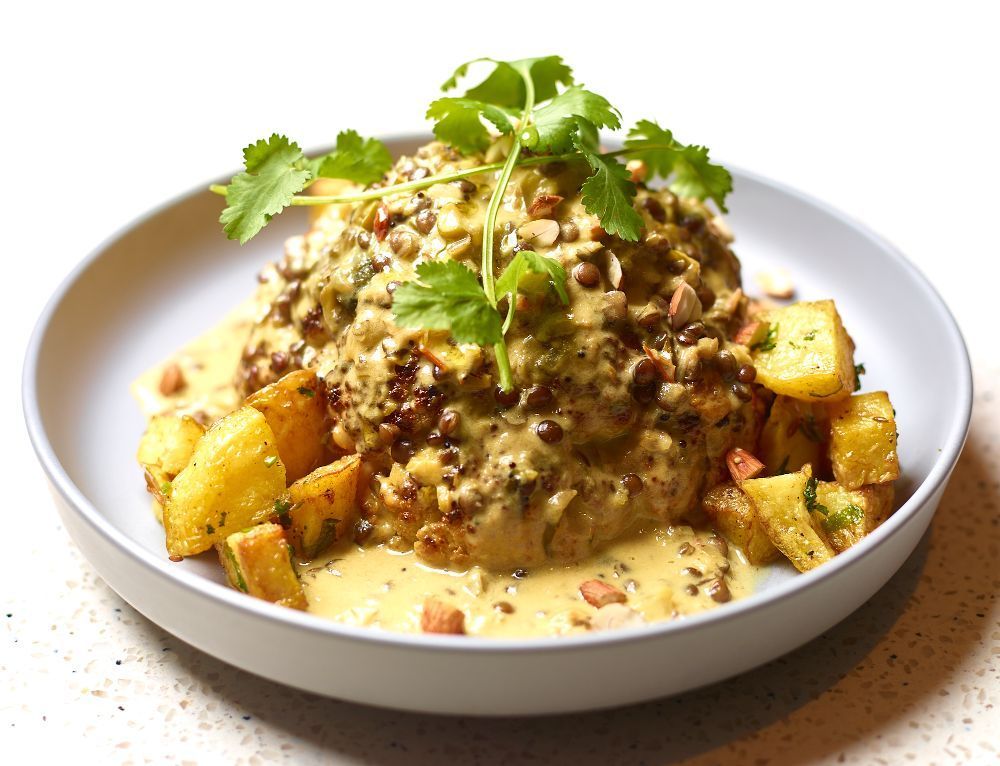
Ingredients
- 1 cauliflower
- 40ml vegetable oil
- 3g 1tsp cumin seed
- 3g 1tsp mustard seed
- 30g ginger, chopped
- 30g garlic, chopped
- 2-4g curry leaves
- 1pc medium yellow onion, chopped
- 1pc red chili, rough chop
- 1pc tomato, chopped medium to small pieces
- 6g 2tsp turmeric powder
- 1g red chilli powder
- 3g 1tsp garam masala
- 1 tin(440ml) coconut milk
- 500ml water
- 1/4 cup brown lentils
- Salt to taste
Method
This is a relatively fast cooking curry sauce, more sweet than spicy, but there is a small amount of spice involved. Note that you may need to use cornstarch to thicken towards the end of cooking. The consistency of the curry should be thick enough to gently rest over the cauliflower.
1. In a small pot over medium heat; add the oil, mustard seed and cumin seed and slowly heat.
2. Once the spices are toasted, the spices, they should perfume the area, add the curry leaves and toast until fragrant. This is a fast process, about 15-20 seconds
3. Add the chopped onions, garlic and ginger. Cook over medium heat, while stirring, until the onions are translucent, about 5 minutes. Once the onions are translucent, almost see-thru, add the turmeric powder, garam masala, chilli powder and the chopped chilli.
4. Stir into the spices into the onions and cook for an additional 2-3 minutes, stirring often so that the spices don’t stick to the bottom of the pot.
5. Add the chopped tomatoes, stir to coat with the spices.
6. Add the lentils, coconut milk and water. Bring to a boil then reduce the heat to a simmer.
7. Allow to simmer for 15-30 minutes
8. Adjust the seasoning if needed and cool for later.
9. Serve the curry over a baked cauliflower and garnish with fresh coriander and sliced almonds.







